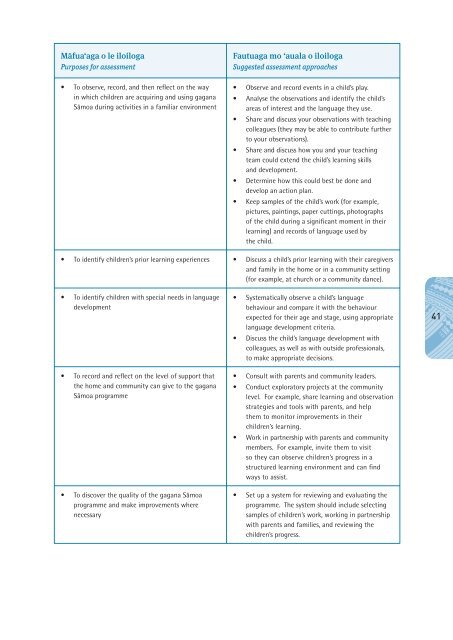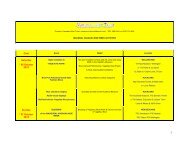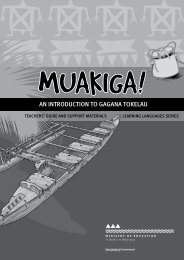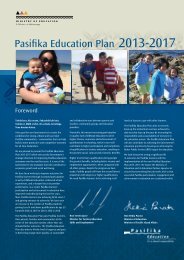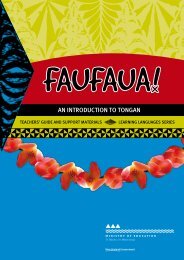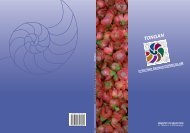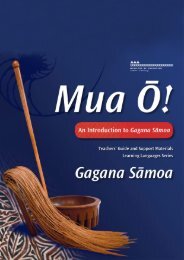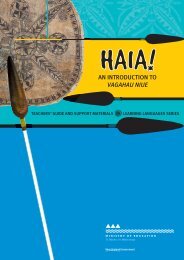Ta'iala mo le Gagana SÄmoa - Pasifika Education Community
Ta'iala mo le Gagana SÄmoa - Pasifika Education Community
Ta'iala mo le Gagana SÄmoa - Pasifika Education Community
You also want an ePaper? Increase the reach of your titles
YUMPU automatically turns print PDFs into web optimized ePapers that Google loves.
Māfua‘aga o <strong>le</strong> iloilogaPurposes for assessment• To observe, record, and then ref<strong>le</strong>ct on the wayin which children are acquiring and using gaganaSā<strong>mo</strong>a during activities in a familiar environmentFautuaga <strong>mo</strong> ‘auala o iloilogaSuggested assessment approaches• Observe and record events in a child’s play.• Analyse the observations and identify the child’sareas of interest and the language they use.• Share and discuss your observations with teachingcol<strong>le</strong>agues (they may be ab<strong>le</strong> to contribute furtherto your observations).• Share and discuss how you and your teachingteam could extend the child’s <strong>le</strong>arning skillsand development.• Determine how this could best be done anddevelop an action plan.• Keep samp<strong>le</strong>s of the child’s work (for examp<strong>le</strong>,pictures, paintings, paper cuttings, photographsof the child during a significant <strong>mo</strong>ment in their<strong>le</strong>arning) and records of language used bythe child.• To identify children’s prior <strong>le</strong>arning experiences • Discuss a child’s prior <strong>le</strong>arning with their caregiversand family in the home or in a community setting(for examp<strong>le</strong>, at church or a community dance).• To identify children with special needs in languagedevelopment• To record and ref<strong>le</strong>ct on the <strong>le</strong>vel of support thatthe home and community can give to the gaganaSā<strong>mo</strong>a programme• To discover the quality of the gagana Sā<strong>mo</strong>aprogramme and make improvements wherenecessary• Systematically observe a child’s languagebehaviour and compare it with the behaviourexpected for their age and stage, using appropriatelanguage development criteria.• Discuss the child’s language development withcol<strong>le</strong>agues, as well as with outside professionals,to make appropriate decisions.• Consult with parents and community <strong>le</strong>aders.• Conduct exploratory projects at the community<strong>le</strong>vel. For examp<strong>le</strong>, share <strong>le</strong>arning and observationstrategies and tools with parents, and helpthem to <strong>mo</strong>nitor improvements in theirchildren’s <strong>le</strong>arning.• Work in partnership with parents and communitymembers. For examp<strong>le</strong>, invite them to visitso they can observe children’s progress in astructured <strong>le</strong>arning environment and can findways to assist.• Set up a system for reviewing and evaluating theprogramme. The system should include se<strong>le</strong>ctingsamp<strong>le</strong>s of children’s work, working in partnershipwith parents and families, and reviewing thechildren’s progress.41


